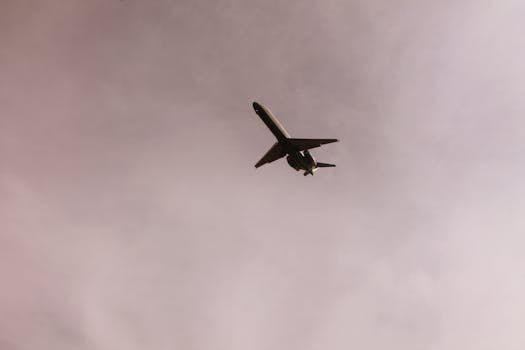
**
Apollo's Ascent: American Travelers Fuel Record-Breaking Air Traffic, Defying Economic Headwinds
The American travel industry is defying expectations. Despite persistent inflation and economic uncertainty, air travel demand remains remarkably robust, pushing air traffic control systems to their limits and highlighting the resilience of the American appetite for leisure and business trips. Airlines are reporting record passenger numbers, exceeding pre-pandemic levels, a phenomenon dubbed the "Apollo effect" by some industry analysts, referencing the renewed surge in space exploration's popularity mirroring a similar boom in air travel. This unprecedented surge is creating both opportunities and challenges for airlines, airports, and the air traffic control system itself.
Record-Breaking Passenger Numbers and Flight Delays: A Double-Edged Sword
The numbers are staggering. Major U.S. airlines like Delta, United, and American are consistently reporting record-breaking passenger loads on both domestic and international flights. This surge in demand, fueled by pent-up travel desires and a renewed focus on experiences, has led to a significant increase in flight delays and cancellations, particularly during peak travel seasons like summer and holidays. The FAA (Federal Aviation Administration) is grappling with the challenge of managing this unprecedented volume of air traffic, leading to increased pressure on air traffic controllers and infrastructure.
Factors Contributing to the Air Travel Boom
Several factors are contributing to this unexpected surge in air travel:
- Pent-up Demand: The COVID-19 pandemic severely curtailed travel for two years. Now, many Americans are eager to make up for lost time, prioritizing travel experiences and family reunions.
- Revenge Travel: The term "revenge travel" has entered the lexicon, perfectly capturing the desire to compensate for lost travel opportunities during the pandemic.
- Stronger Economy (Relative): Despite economic uncertainty, many Americans still possess disposable income, and travel remains a high priority for many.
- Increased Affordability (In Some Segments): While overall costs are high, some airlines are offering competitive deals and budget options, making air travel more accessible to a broader range of consumers. This includes the rise of budget airlines and the increased use of flight comparison websites.
- Technological Advancements: Easier booking processes, mobile check-in, and other technological advancements have streamlined the travel experience, making it more appealing to a wider audience.
The Impact on Airports and Airlines
The increased demand is putting immense pressure on airports and airlines. Airport congestion is becoming increasingly common, leading to longer security lines, gate delays, and overall frustration for travelers. Airlines are scrambling to add flights and hire staff to meet the demand, but it's a race against time. The challenges are amplified by issues such as baggage handling delays, pilot shortages, and air traffic controller staffing levels.
Navigating the Challenges: Solutions and Strategies
The current situation requires a multi-pronged approach to ensure the smooth functioning of the air travel system:
- Investing in Infrastructure: Upgrading airport infrastructure, including runways, terminals, and baggage handling systems, is crucial to handle the increased passenger volume. This includes investment in technology to improve efficiency.
- Modernizing Air Traffic Control: The FAA is investing in next-generation air traffic control systems, aiming to increase efficiency and reduce delays. This involves utilizing advanced technologies like satellite-based navigation and automation.
- Hiring and Training: Airlines and airports need to aggressively recruit and train staff, addressing the existing shortages of pilots, air traffic controllers, and ground crew.
- Improved Passenger Communication: Clear and timely communication with passengers regarding delays and cancellations is essential to manage expectations and avoid widespread frustration. This involves leveraging technology like real-time flight tracking apps and proactive notifications.
- Sustainable Air Travel: Addressing the environmental impact of air travel is increasingly important. Investing in sustainable aviation fuels (SAF) and developing more fuel-efficient aircraft are crucial steps.
The Future of Air Travel in America: Growth and Sustainability
The current boom in air travel is unlikely to subside anytime soon. The underlying factors driving this surge, such as pent-up demand and a desire for experiences, are expected to persist. However, the industry must adapt to the challenges it faces. By investing in infrastructure, technology, and personnel, the U.S. air travel system can continue to meet the growing demand while ensuring a safe and efficient travel experience for all.
The "Apollo effect" signifies more than just a temporary spike in travel. It represents a fundamental shift in travel behavior, reflecting a renewed appreciation for travel and exploration. The industry's response to this surge will shape the future of air travel in the U.S., determining whether it can continue to thrive while addressing the challenges of sustainability and efficiency. The focus now shifts towards proactive planning and strategic investments to ensure the seamless management of this high-altitude air traffic. The key will be a collaborative effort between government agencies, airlines, airports, and technology providers. The future of air travel in America depends on it.




















